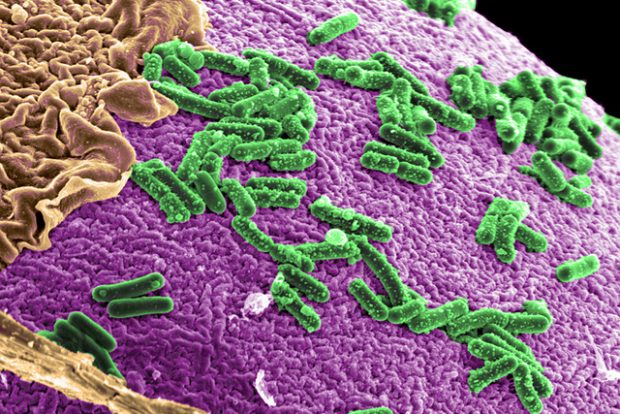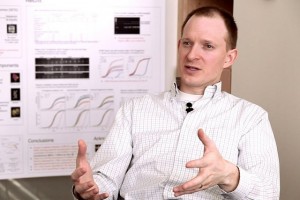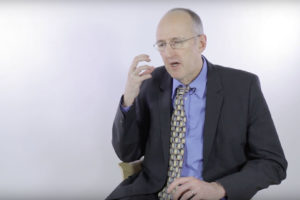Queen of problems in evolutionary biology remains ...
New research shows that snails that reproduce sexually are disadvantaged even when compared to polyploid asexu...

Deep Brain Stimulation (DBS) is the electrical stimulation of structures deep inside the brain by inserting an electrode through the scalp, skull, and cerebral cortex and delivering electrical pulses in order to alleviate various conditions, the most common of which is Parkinson’s disease (PD). This condition is due to the degeneration of nerve cells in the brain’s ‘basal ganglia’, which causes tremors, rigid muscles, and inability to move at will (akinesia).

We can trace the history of knowledge about the electrical activity of the nervous system all the way back to Roman times. In 15 A.D., the emperor Tiberius observed one of his freed slaves step on an electric eel. He noticed that the eel’s electric shock caused the slave’s muscles to contract. So it became well known from these earliest times that the brain worked electrically.

Perhaps, the most important advance thereafter was the development by Medtronics of a stimulator that could be implanted in the body. Medtronics started by making pacemakers for stimulating the heart. They then developed their cardiac pacemakers further for stimulating parts of the brain. In the 1980s, Irving Cooper did a lot of experiments on humans to see whether stimulation could be used to alleviate various conditions. But none of this was very easy to carry out in those days, and what’s more, the success of a new drug treatment for Parkinson’s disease, namely L-DOPA (which replaces the chemical that is missing in Parkinson’s disease), made it impractical to continue to develop DBS. But soon, it became clear that L-DOPA treatment for Parkinson’s disease was not a permanent solution. By this time, in the hands of Mahlon Delong, Alan Crossman, and Tipu Aziz, much more was known about the pathophysiology of the basal ganglia in Parkinson’s disease. It was established that stimulating two structures deep in the basal ganglia, the globus pallidus internus and the subthalamic nucleus, were likely to be beneficial. So DBS emerged again. In Grenoble, France, Louis Benabid began stimulating the thalamus to alleviate tremors in PD, and later in the UK, Tipu Aziz began targeting the globus pallidus and subthalamic nucleus with often dramatic improvements in Parkinson’s symptoms. Now worldwide, more than 150,000 Parkinsonian patients have received DBS for alleviation of their Parkinson’s symptoms.
The surgeon decides, first of all, where in the brain he wants to stimulate. If you are doing DBS, you have to be able to target your electrode very precisely to the particular part of the brain you want to stimulate, and that means that you have to use a stereotaxic frame. The patient is anesthetized, and the frame is attached to his head; this enables the surgeon to target his electrode to any point deep within the head, which can be defined by x, y & z coordinates (width, fore, and aft, and depth) in relation to the points by which the frame is attached to the patient’s skull. Then he does an MRI scan to find which coordinates he needs to use for that particular patient for the target he’s chosen, as there is great variability between individuals. He then makes a small hole through the scalp and skull.

After this, the patient is woken up because the surgeon needs to ask the patient to answer questions and make movements during the next stage. He uses a computer program to direct the electrode to his chosen point. He then advances the electrode to that point and begins stimulating it to find out whether this alleviates the problems. Getting control over the symptoms happens when the stimulation current is sufficient to entrain the ongoing electrical activity in the basal ganglia in such a way that it is no longer oscillating spontaneously out of control. In Parkinson’s tremor, for instance, the tremor is caused by pathological synchronization of the electrical activity in the basal ganglia. If the surgeon can get rid of this synchronization, then she can eliminate the tremor. What the DBS does is to entrain the neurons to its stimulation frequency, which tends to be quite high, 150 times a second, so that the damaging tremor synchronization cannot take place.
The most common indication for DBS is Parkinson’s disease. In most patients with Parkinson’s disease, we start off with the usual treatment, which is L-DOPA. It treats the condition pretty well for a few years, but very often, the worst movement disorders return, and it is then that DBS can get rid of them. There are a lot of other potential uses for DBS, however. For instance: tremor has many other possible causes than Parkinson’s disease. DBS can get rid of most of these. Then there is a common complication of Parkinson’s disease and also a disease in its own right called dystonia which is where muscles, typically in the neck, contract when they shouldn’t. Such head twists can be alleviated by DBS.

Even though it is most widely used for Parkinson’s disease, tremors, and dystonia, there are a lot of other conditions that are now being researched. One of the most well-developed is for intractable epilepsy. Another common condition that DBS looks like being able to solve is chronic pain. For instance, if you have an amputation, very often, the missing leg becomes very painful, and DBS can often help with that.
Now people are seriously thinking that it may work for depression. It’s also been used to treat addiction and to treat obsessive-compulsive disorders. It’s even been used for anorexia, and conversely, people are claiming that it might be useful to overcome serious obesity by modulating people’s hunger mechanism in the hypothalamus. It has even been claimed to improve memory in Alzheimer’s disease. These are all uses of DBS that are under research at the moment. However, the potential uses of DBS are even greater than this. Because the brain works electrically, if one could set right the disordered electrical activity that is causing symptoms precisely where this is happening, then DBS could be extended to a myriad of other conditions.

There are always side effects for any drug or medical intervention, however. First, there are the possible complications of the anesthesia and the surgery itself. You have to put an electrode through the scalp and skull into the brain, which can cause infections or bleeding. Obviously, there is some damage caused by the electrode going through the brain. Usually, this is very slight, but occasionally it can burst an important blood vessel and thereby cause extensive damage, but this is very rare (about 1/1000).
In addition, there are potential side effects of the actual DBS. These are more difficult to estimate. For instance, we know that Parkinson’s patients sometimes resort to suicide because getting this disease is, of course, very depressing. Some patients do commit suicide after undergoing DBS, but this is probably less common than suicide in PD patients who have not had DBS. Nevertheless, it has been claimed that suicide might be a side effect of the DBS itself which is indeed a theoretical possibility because the basal ganglia also play a part in controlling emotions. Conversely, there is now some evidence that DBS in other structures can actually alleviate depression, hence suicide. Then there are more dramatic adverse side effects of basal ganglia, such as hypersexuality or pathological gambling, but again these are things that occur in some Parkinson’s patients anyway, and again have not been shown to be particularly associated with DBS.
There are a number of ways DBS is likely to develop. At the moment, the pattern of stimulation used is very stereotyped; but in the future, we will be able to use feedback from the stimulated area to adapt the stimulation to provide the optimum pattern to alleviate that particular patient’s problems; this is called ‘demand pacing’.
It is almost certain that some patients with very severe depression, and in other psychiatric conditions, may gain benefit from DBS. The questions remain: which patients will benefit? And which are the best targets? There are various different places in the brain that we can stimulate, which could help these problems. We don’t know which are the best, however, and that’s true for other conditions which we believe we can help, for example, pathological pain or many kinds of epilepsy or many other diseases. We need to know where is the best place to stimulate for each condition, and we need to determine in which patients that stimulation will work best – at the moment, we simply don’t know.
The big open question is whether we will ever be able to modulate electrical activity deep in the brain without having to bore a hole in the head. People don’t usually want cranial surgery because it sounds very dangerous, and it definitely does carry risks. What I hope is that we will be able to develop means of stimulating deep in the brain without having to stick electrodes through the skull and the brain. But it will require great advances in the physics of delivering energy through the skull to precisely the right places in the brain.

New research shows that snails that reproduce sexually are disadvantaged even when compared to polyploid asexu...

MIT Research Scientist Christopher Carr on terrestrial Mars analogues, the importance of computer science in a...

Neuroscientist Friedemann Pulvermüller on brain-language relations, brain lesions, and simulation of cognitive...